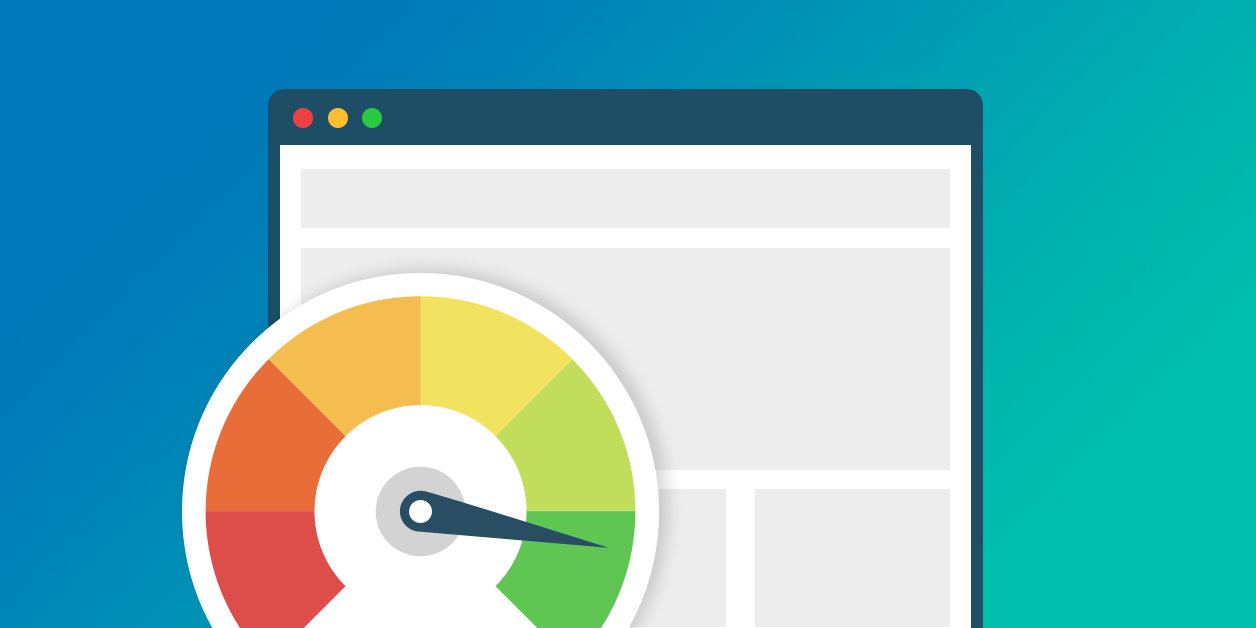5 Ways to Improve Page Speed in 2022

Page speed has a major effect on search ranking, site abandonment, and sales conversion. Today’s web users have zero patience for sites that are slow to load—according to a survey by Akamai and SOASTA, even a 100-millisecond delay (0.1 seconds) can result in a 7% reduction in conversions.
The importance of making sure your website loads quickly cannot be overstated. To help get your site up to speed (see what we did there?), we’ve picked out five things you can start doing today to make your site load faster.
Start With Your Baseline
“You can’t improve what you don’t measure,” the saying goes—and boy is that true for web page performance.
At this point, you’re not trying to speed things up (we’ll get there soon). Your main concern right now is to benchmark your site’s current load times so you have a starting value to optimize.
Google’s PageSpeed Insights is a good starting point to benchmark current site performance. If you use other tools, just make sure you are consistent with your testing so you have accurate comparisons and can truly measure improvement.
Caching is Your Best Friend
Without caching, the content of each page on your site is generated dynamically every single time a user accesses it. The page’s resources have to be sent back and forth over a network each time, which is both slow and expensive. Caching allows the page data to be saved in a temporary storage area (called a cache) so that web page content is dynamically generated only once, with its output stored for a couple of hours or days.
Once a page is “cached”, then every time it’s accessed, the site doesn’t have to regenerate it dynamically—it just displays the contents from the cache, which is one of the biggest ways to cut down on web page load times.
If you want to improve your Page speed, caching is a great place to start. Check with your web host to see if they offer caching (most do) and if you’re running a WordPress site, you can access a whole slew of free caching plugins available in the WordPress.org plugin repository.
A CDN is Indispensable
CDN = Content Delivery Network. Using one is another easy way to get huge performance gains on your site.
How huge? We’re talking 60% bandwidth and 50% of the requests your websites make.
The quick-and-dirty way to think of a CDN: to picture a network of servers all over the world that each has copies of your website. When a user accesses your site, the CDN locates the server closest to the user’s location and loads a copy of your site from that nearby server for them to see.
Here’s how this could play out if your site was hosted on a server in the UK. If someone from Vietnam visits, there’s a huge amount of geographical space between your site and that user. With a CDN that has a server in, say, Singapore, the user in Vietnam would load the site from Singapore instead of the UK, experiencing a much faster load time.
Cloudflare is one of the de facto CDNs available, along with StackPath and Akamai. Jetpack by WordPress.com also offers CDN features for images and other media.
Don’t Let Plugins or Themes Slow You Down
Plugins and themes can contain lots of stylesheets, JavaScript files, and other assets like images that are loaded on the page. These may be coded in ways that aren’t as performant as possible, so you may have a plugin or theme on your site contributing to slow load times.
To rule this out as a problem, take a look at all of the active plugins on your WordPress site—do you truly need every single plugin there? Get rid of any that you don’t need and enjoy the speed improvements you get as a result, which could be small or significant depending on each individual plugin you remove.
Themes are harder to replace, but if you have a bloated theme with lots of JavaScript files loading on every page, then it might be worth seeing if you can find a simpler, faster-loading theme to use instead.
Optimize What You Have
After seeing what plugins and themes you can replace or remove to improve your Page speed, take a hard look at the ones you’re going to keep. Review the documentation of these products and explore their wp-admin options panels—you might find performance-boosting options hiding there that you’re not taking advantage of!
Take The Events Calendar, for example. We have a “Month View Cache” option that creates huge speed boosts for the Month View. Many other plugins have similar optimization options that are worth exploring.
Update Like a Boss
Probably the most simple and easy tip: update your software! Plugins, themes, and WordPress itself all ship performance improvements that you’ll miss if you don’t update your software regularly.
Plus, it’s just good form to regularly update your site, so you don’t miss out on any security improvements, bug fixes, and new features for your site.
Compete Beyond Yourself
Remember earlier when you found your baseline? As you implement these tips to improve your site speed, be sure to close the loop by testing again and comparing against your previous results. Next, you can set new goals to beat your competition—run a site performance test for their site and see if you can make further performance improvements to make your site even faster.
Yes, this stuff takes time, but it’s 100% worth the effort. Better search engine rankings, more sales, and happier website visitors…improving your site’s page speeds is truly a win for everyone.